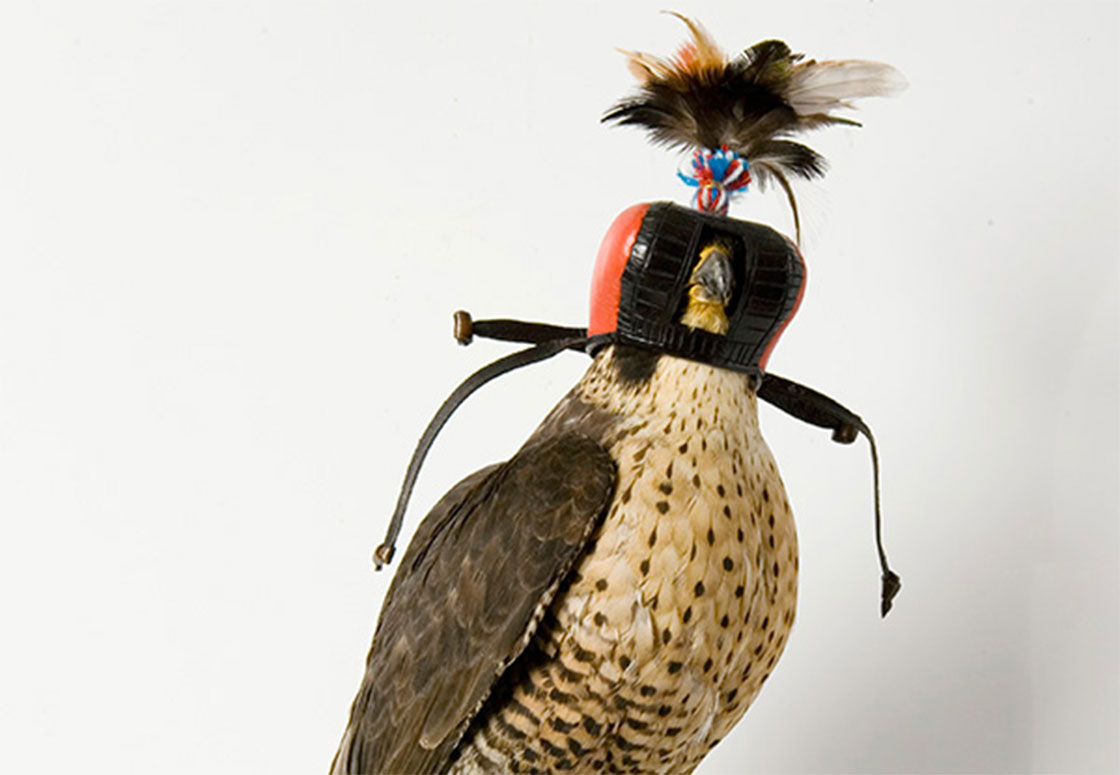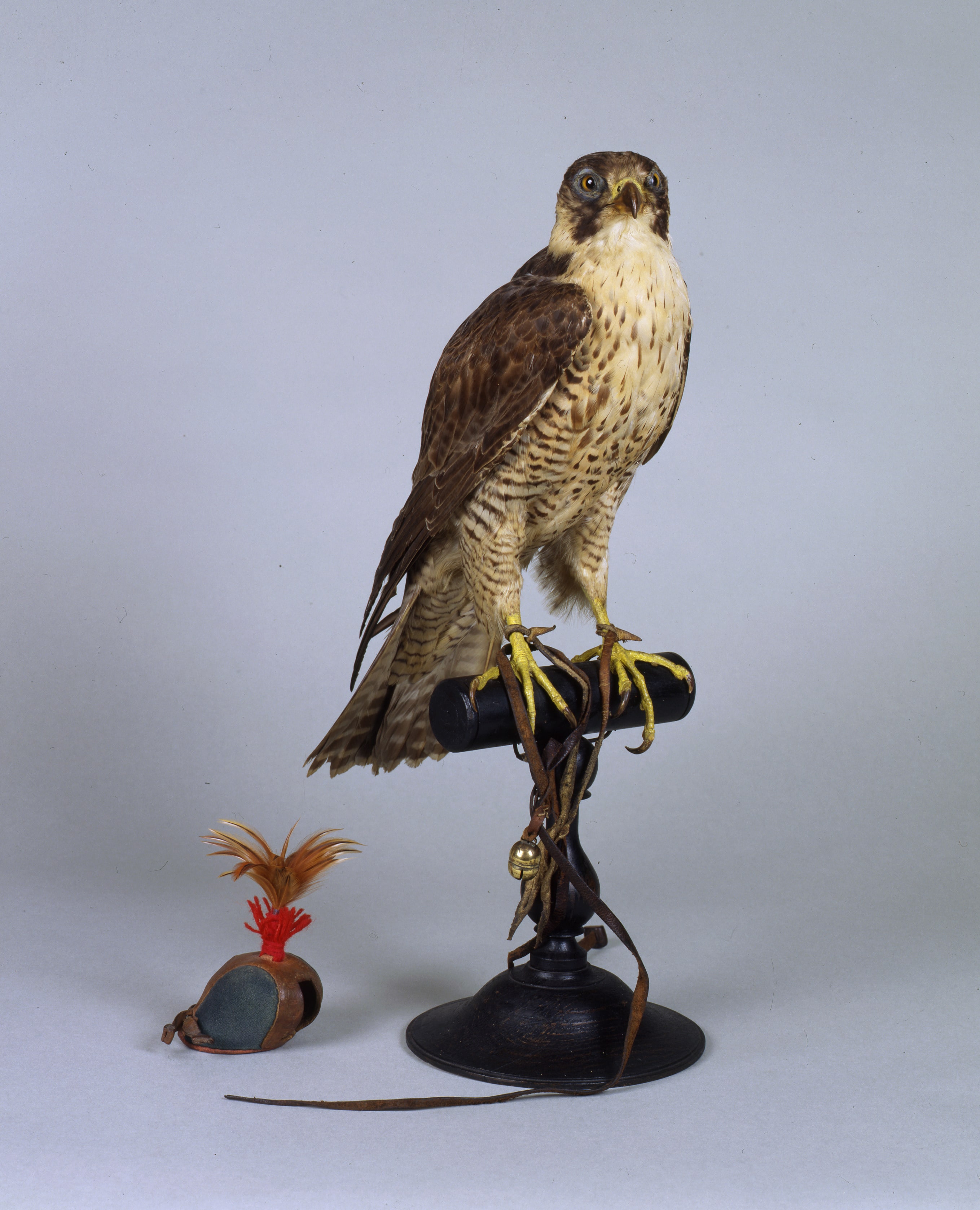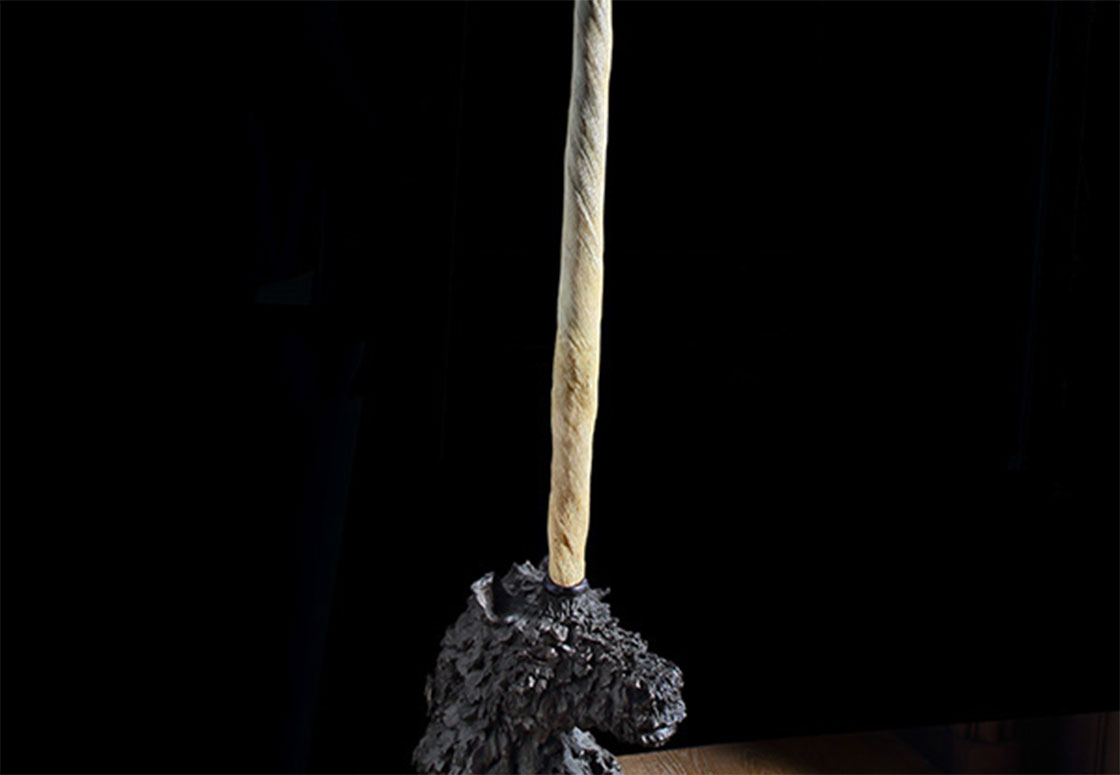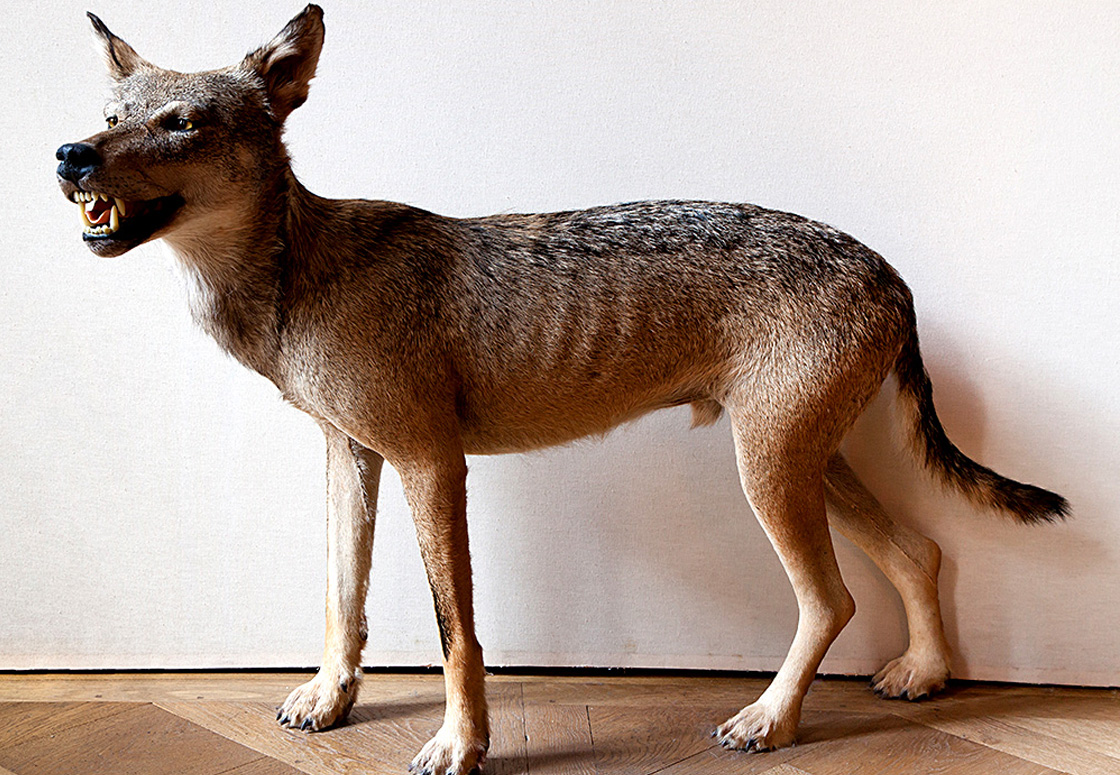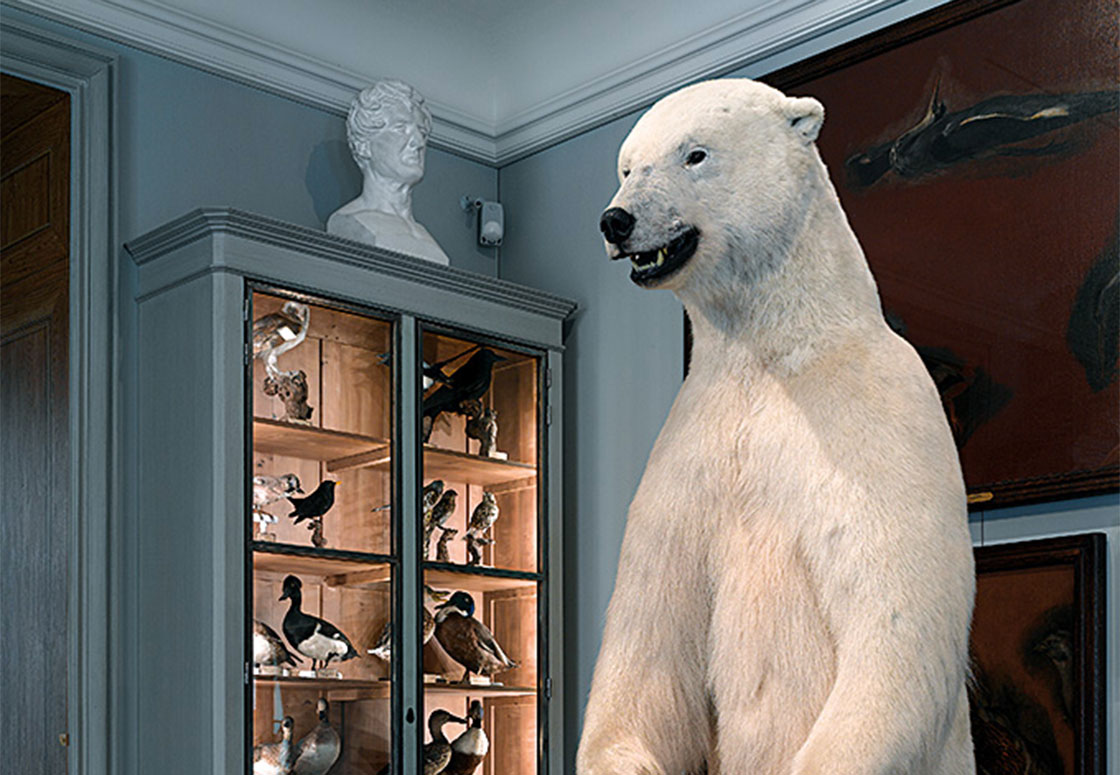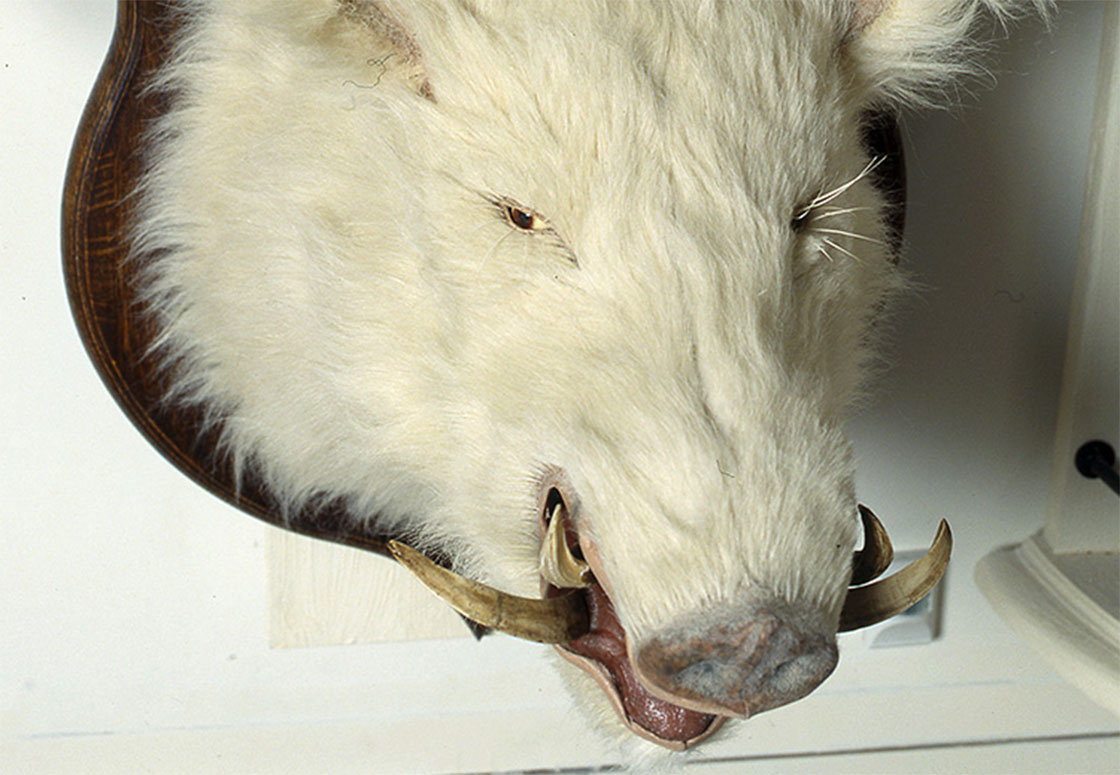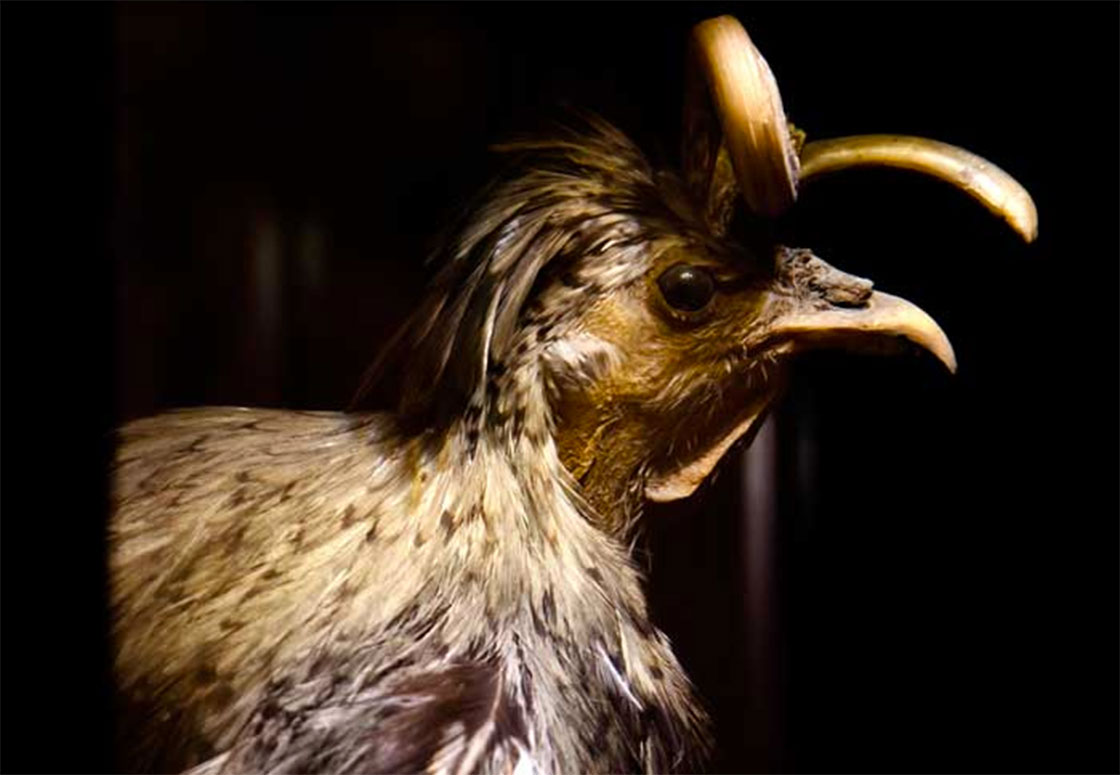Stuffed peregrine falcons
According to Christian Antoine de Chamerlat, falconry, or hunting in flight, "is the art of taking wild game, fur or feathers (...) with the sole help of one or more birds of prey specially trained to do so". Two stuffed peregrine falcons are present in the collections of the Musée de la Chasse et de la Nature. They were named by their respective owners Jocaste and Urgande. Jocasta belonged to a Scottish hunter, Mr. Jack Frick, at the beginning of the 20th century. The bird was quickly "reformed" because of its alleged "lack of courage".
Urgande was offered by Mr. Fougeron to the Friends of the Musée de la Chasse et de la Nature in 2003. The two birds of prey are presented with their accessories: chaperon (hood covering the eyes of the bird to tranquilize it), jets (short straps attached to the legs of the bird) and bells (bells attached to the legs and allowing to locate the bird of prey during hunting parties).
During the 20th century, flight hunting has experienced a certain revival. In 1954, it was recognized in France as a legal way of hunting, thanks to the action of the National Association of Falconers and Goshawks of France. In 1972, a decree classifies all birds of prey, which were until then the object of massive slaughter, in the category of protected species. Falconry was also listed in 2010 as an intangible cultural heritage of humanity by UNESCO.


